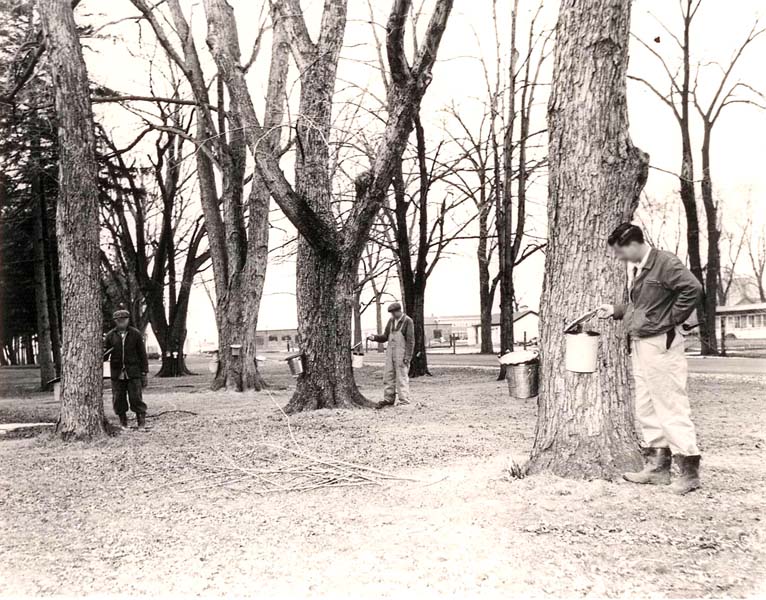Labour

A seasonal activity: patients collecting maple syrup from the trees on
the London Asylum for the Insane property. RMHCL
1 |
2 |
3 |
4
"The increased quietness and orderliness of the patients, together with their good health, are all due in a large degree to the steadiness of employment." -Dr. Henry Landor, Annual Report, 1874
One of the principal elements of moral therapy was the implementation of a routine comparable to what a person would have experienced outside of the asylum. The superintendents of the London Asylum for the Insane (LAI) encouraged the involvement of patients in labour activities, which was an essential component of daily life. For this reason, duties were allocated to any patient who was willing and able to work. Some patients were assigned to a full eight hours of work per day, while others worked for only a few hours. Patients that chose not to be employed eventually became tired of their monotonous routine, and eventually joined the collective effort.
Patients were often assigned to work with hired staff in a variety of jobs throughout the asylum community. Initially, labour was segregated by traditional gender roles, with males predominantly working on the farm or general upkeep of the institution. The females assisted in cleaning the interior of the asylum as well as working in the sewing and laundry rooms. Female patients eventually were given the opportunity to work outdoors, along with the males.
The purpose of this busy schedule was not only to keep the patients active but also to allow them to develop and apply their skills. Upon admission, most patients in the 19th century were already highly skilled in a variety of trades. As a result, patient work played an important role in the functionality of the asylum, which contributed to the institution's self-sufficiency. Patients produced their own food and assisted with various duties in the asylum community.
In most instances, patients were not paid for their work. The use of unpaid labour allowed for the London Asylum to reduce the costs of operation, which saved the LAI and the Ontario government money. However, there were some instances where superintendents insisted that a patient be hired on staff and paid for their employment. For example, in 1891, Dr. R. Maurice Bucke, wrote a letter to Provincial Inspector R. Christie. The letter requested the employment of a patient, who was about to be discharged from the asylum, because the tailor shop where the patient had been working, was in need of an experienced assistant. The Inspector agreed that this patient, who had shown great talent in comparison to the hired staff, be given this opportunity for employment. Bucke had requested the patient to be paid the same amount as the previous assistant; a rate of $12 per month. However, the Inspector agreed to only pay the patient $8 per month.